We got our first look at the Rio Yelcho as we motored across a bridge spanning its mouth on the way to the lodge from Chaiten’s small airport. We’d been driving through Chile’s northern Patagonian rainforest for the better part of an hour, our attention diverted by the Jurassic flora and mountain scenery that just kept getting better with every passing bend.
Since we had arrived at sea level, an hour or so prior, our host from Yelcho en la Patagonia, Sebastian, had been a font of local knowledge, filling our travel-tired brains with details about his little corner of the trout universe. As we traveled through the town of Chaiten, he relayed tales of the 2008 eruption of the Chaiten volcano, which had layered the town with mud and ash up to a meter thick, destroying much of it. A week or so later, the Chaiten River rerouted itself around the fresh volcanic deposits, carving a new path directly through town, wiping out much of what the mud and ash hadn’t. Almost a decade later, Chaiten is still largely in shambles, with recovery only coming slowly.
As we left Chaiten behind, Sebastian’s focus turned from volcanos to tales of precisely what we had traveled across the globe in search of—big brown and rainbow trout. But the excitement of being half a world from home and only a couple dozen miles from our destination began to wear off and the bone-weary exhaustion of the better part of two days spent in airliners and commuter planes began to kick in. The car ride served to lull us into a state of semi-consciousness, and only when we saw the river—and the lake that fed it—were we able to perk up and focus. There, below us as we traversed the bridge, were the deep, green waters of Rio Yelcho, flowing out of Lago Yelcho on its way to the ocean. To our right, we saw a wading fly fisher casting into a tail-out, and to our left, a small boat held steady in the outflowing current while an angler appeared to be trolling with a fly rod.
“The baby salmons, they gather there on their way to to the sea,” Sebastian said, pointing to the boat. “The big trouts, they come up and eat them.”
Wait. There are salmon?
More Like This
Then it hit me. In the mind-fog during the plane ride from Puerto Montt, I remembered gliding over dozens of giant net pens laced throughout the waters of the southern ocean—salmon farms every one of them. Over time, some Atlantic salmon have escaped these enclosures and have done what they might do naturally, even in the wrong damn ocean in the wrong damn hemisphere. They’ve migrated. They’ve spawned. They’ve become wild. And it isn’t just the Atlantics. Pacific king salmon have also found their way to Chilean waters. Now, in early summer here in Patagonia, Atlantic salmon smolts were on their way to the Pacific to grow fat and happy in the salt. And, in just a week or two more, adult king salmon will make their way up the Yelcho to spawn in the lake and rivers farther up in the Andes.
Not only did the lush, green of the mountains remind me of a prehistoric landscape, but the unintended consequences of trying feed the world from massive net pens put a phrase from that first iconic Jurassic Park film in my my head.
“Life finds a way.”
And for two far-flung fly fishers, this was a good thing.
The Lake
Lago Yelcho’s trout are rotund, to put it mildly. Lake fish without a doubt, they’re round and plump, thriving in this lush environment where dragonflies hover over the water, and their aquatic nymphs swim beneath it, along with baitfish and other critters ranging from leeches to amphibians. And of course, small trout and salmon.
Neither Chad nor I would consider ourselves avid lake anglers. We both prefer moving water that’s readable and full of features. It just feels more natural, as fly anglers, to cast to trout in obvious holding water, like tail-outs, riffles and deep holes. But Lago Yelcho’s big, dry-fly eating trout beckon even the most narrow-minded of anglers.

Lago Yelcho has lots of features—crystal-clear flats where we were able to cast to cruising browns as if they were tropical bonefish, glacial river inlets that stain the clear waters of the lake a brilliant emerald green, drop-offs that plummet a hundred feet from water so shallow it might tickle your shins if you waded it, and sheltered bays and inlets rife with weed growth that looks more suited to pike or bass than it does to trout. And there are inlets and outflows of storied rivers like the Yelcho and Futaleufu. And all around, the Andes shade the lake, holding water hostage in high glaciers, releasing dozens of cascades that take your breath away.
Our guide that first day, Adrian, sifted through our “big fish” streamer boxes, ignoring the patterns we suspected would pull big browns out of cover. As he flipped his fingers through my flies he settled on something of which I had precious few to spare.
“Use this,” he said matter-of-factly, handing me a small streamer. “A green Woolly Bugger.”
Only, with his Chilean accent it sounded much more mysterious. “A grin whooly bawger.”
I smirked, not sure what to say. I spent the week before the trip tying weighted streamers that looked like small chickens in anticipation of massive browns and leaping rainbows. And this guy wants me to use a green ‘bugger?
Yelcho is home to a prolific dragonfly population—these two-inch-long critters are nothing short of terrifying when they hover near your ear. But, when the wind picks up, a few of the fat daredevils inevitably end up on the water, bringing tremendous strikes from hungry trout below. In their larval form, these dragonflies resemble a size 6 green ‘bugger. In the weedy shallows and along sudden dropoffs, this was the fly of choice, and both Chad and I managed to pull a number of 22- to 24-inch trout to the boat with the help of perhaps the most elementary streamer ever tied.

On the second day, we asked Adrian to take us to the lake mouth where Lago Yelcho dived into the gorge and became the Rio Yelcho. Adrian piloted the the little skiff into the current seam where the lake transitioned into the river where the water boiled with trout chasing salmon smolts just below the surface. We busted through every baitfish pattern we had that morning, catching nice 16- to 20-inch trout at will. We used small Clousers, Deceivers, Divers and even poppers that I’d tied for pike the summer before. I even caught a fat rainbow on a small Gotcha that somehow found its way into my streamer box.
On the lake, it was mostly a three-fly game. Fat dragonflies or hoppers for the dry-fly chasers, green ‘buggers for fish in the weeds and along drops and more traditional baitfish for “blitzing” trout in the outlet.
Running low on both, I managed to tie up a few in the evenings spent between cocktails and some of the best lodge food I’ve ever had the pleasure of eating. Adrian brought us a few size 6 hooks, and I settled in to tie a few flies at the lodge’s vise here and there, all the while enjoying lush glasses of carmenere or the occasional gin and tonic. The lake’s big trout didn’t stand a chance.
But, at Yelcho, it’s not just about the lake.

The Futaleufu
A handful of rivers flow into Lago Yelcho, none more storied than the Futaleufu. Higher up, the river is a big-fish paradise, but lower, near the inlet and upstream maybe a mile or two, the river rushes through a rich, green canyon and boasts classic trout water.
Adrian hustled the little skiff up the river a ways, and then proceeded to float us back down to the lake, stern first. We casted to more traditional holding water—we found our comfort zones again—and caught a bevy of browns and rainbows in the 15- to 17-inch range. While the fish were smaller, the sheer canyon walls and the glaciers that dripped into waterfalls above us more than compensated.
We spotted some cruising fish sipping dries along the near bank and shooed a couple of rangy Brahma cows out of the way to find the right casting angle. A carefully placed cast later, I was hooked to toad of a brown trout but, alas, the 4x tippet was simply not enough to keep the big fish attached. The “ting” of the break-off was heartbreaking, but after the better part of two days spent slinging protein imitations and blind-casting over weed beds, most of the satisfaction lay in hooking a big Patagonian trout on a size 14 Adams.

The Yelcho
A short boat ride from the lodge, the Yelcho flows beneath that bridge we crossed the day we arrived and then cruises through a high-walled gorge. The Yelcho boasts a mix of deep cutbanks choked with sunken deadfall, dense tree-lined banks sheltering an abundance of shady lies, boulder gardens and gravelly runs, all of which beg to be explored and dissected methodically on foot. But, like most of the region’s most productive rivers, the Yelcho courses deep and green and deceptively hides its torrent-like flows. The places where the Yelcho welcomes wade fishermen are few and far between, and so we float.
As our drift began, instinct told us to focus our attention on the serious caddis hatches that peppered the river and which were reliably bringing greedy fish to the top. But our guide, Roland, was quick to point out that the risers were almost exclusively small fish. It was all about the streamers, Roland promised.
I tied a bullet-head orange-and black-streamer that I originally crafted for Dolly Varden on southeast Alaska’s Prince of Wales Island, and was rewarded quickly with hard strikes from spirited browns in the 16- to 18-inch range. Swinging flies through fishy runs and teasingly along submerged deadfall brought brutish takes and admirable battles from fish that coursed with wild Patagonian vigor, solid trout that used the river’s heavy current to their advantage.

We rounded a bend in the river—which was running high and slightly off thanks to recent heavy rain—and came to a L-shaped eddy that featured all the makings of a big-fish paradise. And then we saw the noses. Big noses. Size-of-your-fist big.
Roland put the boat within casting range of the risers, and, try as we might, we couldn’t get them to hit the dries we offered. We switched to small streamers and started to pick fish off from the school. The light shifted and we could see trout mingling about a submerged snag—a handful of which would likely push the tape into the mid twenties.
Chad switched to a big streamer and plopped a cast close to the snag and let it sink. As he started his strip, a massive brown appeared out of nowhere, eliciting gasps from both me and Roland. The fish moved to strike, but, at the last second, turned away. We groaned in disappointment.
But we kept playing, and we kept catching fish. We’d wrestled at least a dozen fish from the frenzy but the tape-pushers kept us at work, hoping to bring the biggest of the lot to hand before finally moving on.
I’d spotted a big rainbow resting just under the surface and I put a half-dozen flies under it’s nose, resorting to big nymphs and even floating Girdle Bugs under an indicator. Remembering a trip to Argentina a couple years earlier, I removed the big fly and put a simple San Juan Worm on my tippet. On the first drift, the rainbow grabbed the worm and rocketed from the water. A short fight ensued as I tried to keep the two-foot-long fish from diving under the snag. It leaped again and was gone with a big splash. Working from the front of the boat, Chad looked back at me when he heard the commotion and saw me standing in the stern, dejected, the big rainbow I’d been pursuing for the better part of an hour let loose after an all-too-brief encounter.
“Nice job, asshole,” he said. I just stared at the hole in the water where the fish had just disappeared. Asshole, indeed.

The Palena
Unlike the Yelcho and the Futaleufu, which are reached by boats launched from a put-in a stone’s throw from the lodge bar, the Palena is a minor slog. Once the boats are loaded on trailers, it’s roughly a 45-minute drive down one of Chile’s recently improved highways until a turnoff onto a gravel road that leads to private access to the Palena through the property of a farmer Yelcho en la Patagonia’s guides have a handshake partnership with.
We unfastened makeshift gates in fencing that was fashioned mostly from barbed wire lashed to river-worn tree limbs and bounced slowly through a verdant pasture whose intermingled cast of occupants was so diverse—cattle, pigs, chickens, horses, ducks, goats and geese—that it felt as if we had plagiarized the whole experience from the pages of James Herriot’s All Creatures Great and Small.
The pasture led right to the Palena’s river-rock shores and before long we were speeding upstream, the skiff’s outboard humming behind us. It was thirty minutes more before Adrian finally cut the motor and our eyes immediately fixed on a deep cutbank on the far side of the river. Here, the Palena was only 60 or so feet across, and before long, Adrian had oared us across the current and put us in place to make a few well-timed casts before the current swept us downstream, one of which swung neatly through the deep trough and landed Chad a feisty, darkly colored 21-inch brown trout that we admired briefly before letting it fin off.
As the Palena courses, it gains steam and grows in width at a clip. Only an hour or so later, the river had doubled in size and we spent more time working its margins, pulling almost exclusively brown trout off its deep banks. The fishing was steady, and the fish fat and shouldered with a consistency we’d not seen anywhere else, save for the lake. But the Palena saved its best for last.


Adrian oared us through a boulder-garden, taking time to allow us to explore an eddy that formed atop a perch before the river spilled over a lip and took a hard left turn. Not finding any trout, we pushed back into the current and into the river’s bend, quickly pushing off as the boat came around into a soft edge that sat below the spillover, where we could toss long casts and swing them through the brisk current. As the flies swung downstream of the boat, they moved through water that might have pushed 25 feet deep. We hauled our lines in and lashed on heavier sink tips and led them with even heavier flies—coneheaded leeches and dolly llamas and the like—and before long, the best of the Palena’s brown trout were grabbing at our flies as they swung to a stop and dangled in the deep, ploying current. The grabs were hard and biting, and hookups came far less often than strikes. Still, in the course of 30-or-so minutes, half a dozen browns, each which looked like they’d been pulled from a different river, came to hand, none less than 22-inches long.
A little bit of everything
We got to experience a little of everything, in terms of Patagonian weather. Bright sun fried our pale skin one day, and the next, we were huddled in every thread of raingear we could muster as Adrian or Roland motored the skiff over choppy Yelcho waters to likely fishing spots. And each evening, freshly made pisco sours greeted us upon our return which were washed down with truly fine Chilean beers, individually introduced to us by Sebastian, who has a love for finely crafted beer that even led him to find a way to import a few high-quality American IPAs from the states. Each night, our hunger was sated by truly good food, from simple soups and salads to hearty meals, punctuated by varieties of my new favorite wine, carmenere. Oh, and dessert. Any weight we might have kicked fighting the cold rain was quickly restored thanks to dessert.

There’s something about far-flung travel and the innate surprises that come with it. We spent our days tangling with Chile’s miraculously wild browns and bows, each as diverse as the landscapes and waters in which they swam and staring, jaws agape at lush Patagonian forests and glacier-capped mountainscapes—in this one corner of Chilean Patagonia—were in such abundance that it seemed like we were drifting, floating and driving through a highlight reel of the entire breadth North America’s most scenic overlooks. Our evenings were spent in Yelcho en la Patagonia’s comfortable and luxurious lodge, recounting the days adventures and striking up conversations with other lodge guests—including a transplanted Indian couple (“IT, not casino,” the gal was quick to point out) from Atlanta who stopped in for a break from a driving adventure from one end of Patagonia to the other. Other guests, visiting from Europe and elsewhere, spiced up our evening discussions, making the adventure more memorable.
It’s cliche, but the fish are just part of the experience. The trout come and go. Patagonia stays with you.
If You Go
Choosing an Outfitter
Fishing on Lago Yelcho and the surrounding rivers is served by a handful of outfitters, but perhaps none more centrally located than Yelcho en La Patagonia, whose well appointed lodge sits sits on the shores of the lake near some of the lake's best fishing and within a relatively short distance of several rivers, especially the Yelcho River, which is mere minutes away by boat.
When to Go
The fishing season on Yelcho and its surrounding rivers spans November through April. When you should go depends largely on what you're intending to target: big trout on dry flies in the lake, brown trout on swung streamers in the rivers, or the king salmon that run up Rio Yelcho each autumn.
How to Get There
There are numerous routes to Yelcho and which you should take is determined largely by your origin. Most travelers either travel entirely through Chile (Santiago to Puerto Montt to Chaiten) or through Argentina (Buenos Aires to Esquel), completing the trip with a drive across the border into Chile.





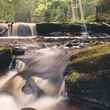




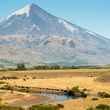
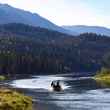


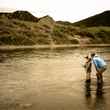
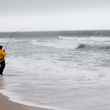



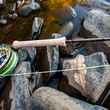
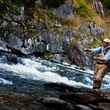



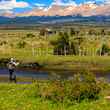
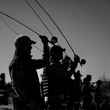



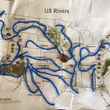
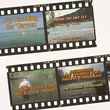
Comments
Felipe Nieto replied on Permalink
The description of Lago Yelcho and the Río Yelcho makes it sound like a dream destination for any fly-fishing enthusiast. The mix of massive browns, rainbows, and untouched Patagonian wilderness is exactly what I’ve been looking for. Definitely adding Yelcho to my must-visit list—can’t wait to experience those emerald waters firsthand!
Pages